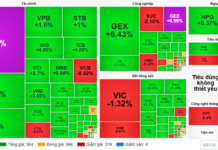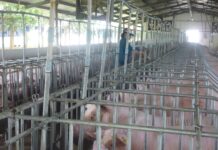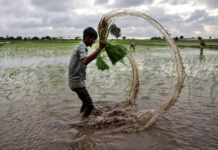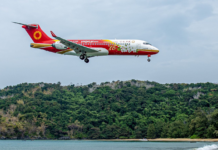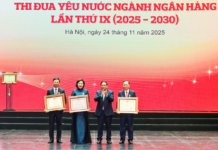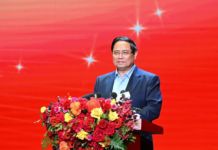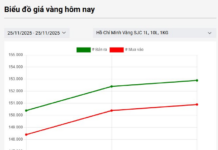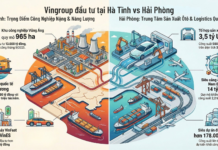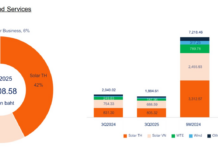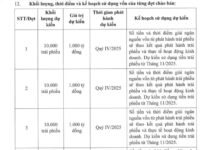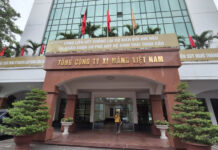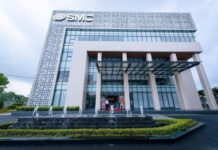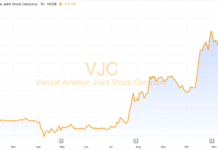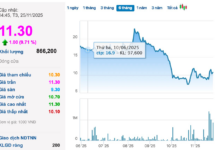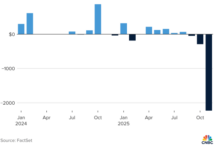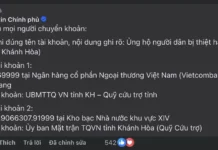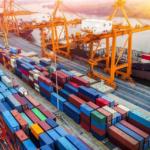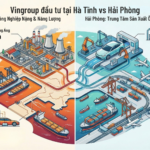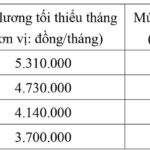According to the Vietnam Food Association, Vietnam’s 5% broken rice is selling at $399 per ton. Meanwhile, the export price of the same type of rice from Thailand is at $354 per ton, India at $376 per ton, and Pakistan at $355 per ton. Thus, Vietnamese rice is currently the most expensive among the top four rice-exporting countries.
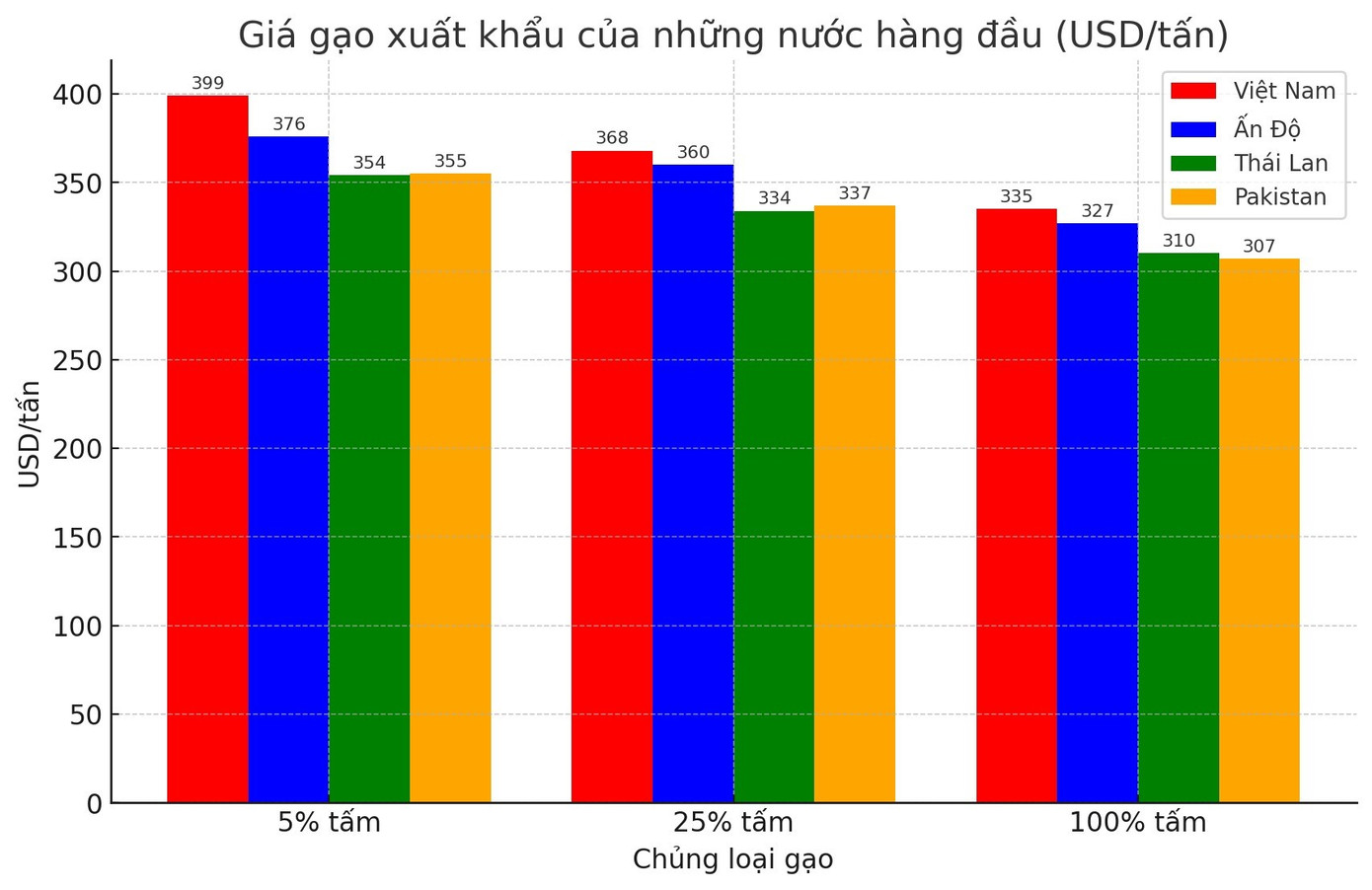
Vietnamese Rice Has the Highest Price Among Top Exporting Countries. Graphic: Thanh Huyen.
According to preliminary statistics from the Customs Department, as of August 15, the country exported nearly 5.88 million tons of rice, earning over $3 billion. The average export price of rice in the past nearly eight months reached nearly $512 per ton.
Besides maintaining the highest rice export price in the world, Vietnam has surpassed Thailand to become the second-largest rice exporter. Statistics from the Thai Rice Exporters Association show that in the first half of the year, India exported 11.68 million tons of rice, up 36.5% over the same period last year, followed by Vietnam with 4.72 million tons, up 3.5%. Thailand ranked third with an export volume of 3.73 million tons, down 27.3%
Recently, the Prime Minister directed the relevant ministries and sectors to seize the opportunity and deploy more “rapidly” the export of rice, especially high-quality rice and organic rice, associated with the traceability system and building a national rice brand to enhance the added value of rice exports. Along with that, speed up the implementation of the Project for Sustainable Development of 1 million hectares of high-quality and low-emission rice cultivation associated with green growth in the Mekong Delta by 2030.
Mr. Bui Ba Bong – Chairman of Vietnam Rice Association – said that the Vietnamese rice industry is gradually moving towards green and prosperous development.
Specifically, towards “green” for human health and protection of the natural environment, adapting to and mitigating climate change. To achieve this goal, the rice industry has gradually promoted the application of smart and precise production solutions to reduce input waste, limit negative impacts on the environment, and especially reduce greenhouse gas emissions.
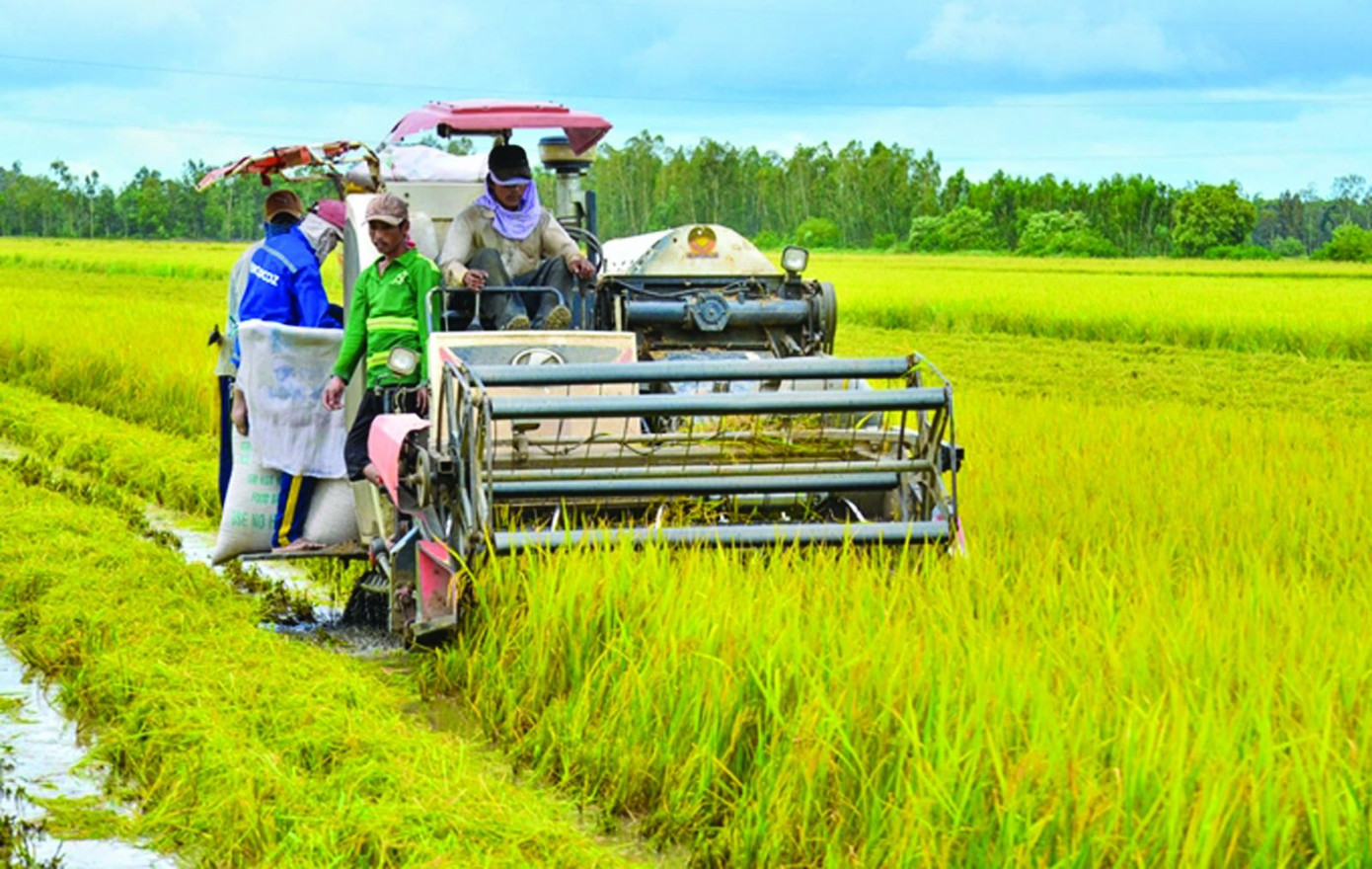
The US Strikes Gold: In 7 Months, America Secures Over $22 Billion Worth of Orders from Vietnam, a Top-5 Global Player with 9.1% Import Tariff.
The United States is the largest export market for Vietnam when it comes to this particular product.
The IFC Decree Draft: Exploring Benefits, Risks, and the Balance Equation
The International Finance Centre (IFC) in Vietnam is at a pivotal moment with the impending issuance of the framework decree. While the expectation is to attract larger inflows of foreign capital, the key mechanism to retain investors remains a crucial question. The delicate balance between incentives, transparency, and risk governance will ultimately determine the true allure of the IFC.

